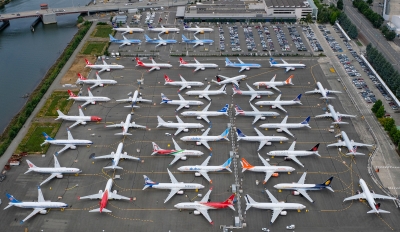
Intuitively, we can say that the business of flying is geared towards having aircraft stationary and parked for a minimal amount of time. This is what simple economics also dictates as aircraft carriers can make money only when aircraft do what they are built for – travel from one city to another and transport passengers and goods.
Given these requirements, it is hard to imagine what would have happened earlier this year when the coronavirus wrecked havoc throughout the world. With many international and local borders closed down, and flying in general considered extremely unsafe, aircraft were grounded like never before.
Question of maximising available space
As most aircraft weren’t flying, it threw up a peculiar new challenge which had to be handled mathematically. The logistic problem of parking the grounded aircraft during a pandemic was resolved by maximising the number of aircraft that could be safely accommodated in any given area.
Similar to how a giant rectangle is broken down into smaller rectangles such that the entire area of the big rectangle is occupied by similar sized small ones, any available space was broken down efficiently such that maximum number of aircraft could be parked in that region. But while the former is a simple matter of dividing the total area of the larger rectangle by that of the small one, a lot more factors had to be accounted for in the case of aircraft.
Size and order
The wing spans of different aircraft are different and so is the nose-to-tail lengths. Apart from sizes, one also needs to take into account the order in which aircraft would eventually be flying out. One mistake, and that would mean a whole lot more trouble. This is easily illustrated in the picture above as it is dear that if any one of the aircraft needs to be commissioned, it means that more than just that aircraft needs to be moved out from its resting place, Nose-to-nose, tail-to-tail, nose-to-tail… aircraft were parked in all possible configurations, just so that everyone of them had a resting place. Apart from designated parking zones in any airport runways, which were suddenly not used for that purpose, were also converted to parking places.
Mathematical angle aside, there turned out to be a human angle as well. Various players in the industry pitched in to help in trying times, meaning that manufacturers, service sectors and airport authorities offered carriers whatever space they could to make room for the grounded aircraft
As the industry slowly continues to bounce back, more and more aircraft are back to flying again. Servicing them during the downtime was crucial, but some of them had to be retired forever. That number, however, might have been much higher had the limited available space not been efficiently utilised.
Picture Credit : Google

